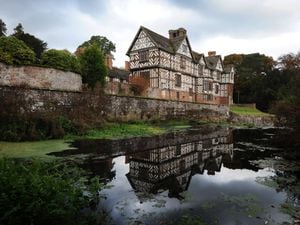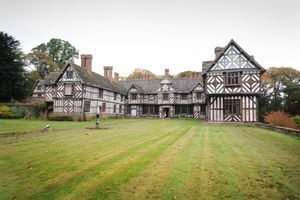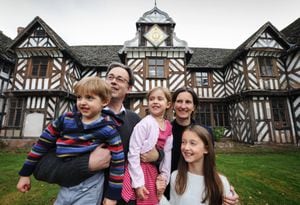Shropshire's Pitchford Hall is on the way back to glory days
The owners of a historic Shropshire hall say they are hopeful that extensive restoration work will see the building taken off English Heritage’s at-risk register.

Pitchford Hall was bought last year by Rowena Colthurst, whose parents had to sell the house in 1992, with her husband James Nason.
The hall, which is one of England’s finest timber-framed houses, is halfway between Shrewsbury and Church Stretton.


Since buying the house back the family has been undertaking a painstaking restoration to return the hall to its former glory.
Mr Nason said: “The point of re-uniting the house back with the estate was to start tackling the neglect that really should have never happened at all.
“So we are trying to do repairs that are needed from the rather sad 25 years when the house was left completely empty – no one lived in there at all, not one night.
“Imagine shutting up your house for 25 years and then returning; clearly any house would go downhill very rapidly.”
Mr Nason said they are hopeful the restoration will lead to the building being taken off the at-risk register, either at the end of this year, or at the end of 2018.
He said: “Our hope was always to get it off the register as quickly as possible.”
The house, which dates back to 1560, is primarily a family home, but is also available for pre-booked restoration tours.
Once complete the hall will be available as an eight double bedroom holiday let, sleeping 16.
The estate also includes a range of other holiday lets.
Mr Nason said that faced with a considerable restoration task, they had started with the worst affected areas of the hall.
He said: “We have focused particularly on, not surprisingly, the worst area and that is the West Wing of Pitchford Hall.
“We have got some incredibly early oak beams which possibly date back to 1250 – 1300.
“When we got there we found there was a danger of collapse so we focussed on the urgent repairs in the oldest parts of the hall.
“There is probably still about two or three months to go on the wing but what we have done is arrested the bad bits and now it is structurally safe and sound where as it was not before.”
Mr Nason said they were thrilled with the progress so far, which has involved painstaking work carried out by craftsmen with traditional skills.
He said: “It takes a lot of time because we are using these skilled craftsmen and they are absolute perfectionists in what they do, whether that is working with oak or lime plastering, painting or decorating, they are always using the old traditional techniques and it just takes time.”
Mr Nason said they had been faced with some horror attempts at previous restoration.
He said: “There is some shocking stuff in there that has happened over the last 25 years, in the great hall there is a breezeblock! They literally used them to repair a section of a Tudor house! They used the wrong plaster so I am afraid there is some pretty poor repairs that happened over the last 25 years. So in a sense we are literally having to rip out some of the plaster that has been put on in that time and replace it with the right stuff.”





